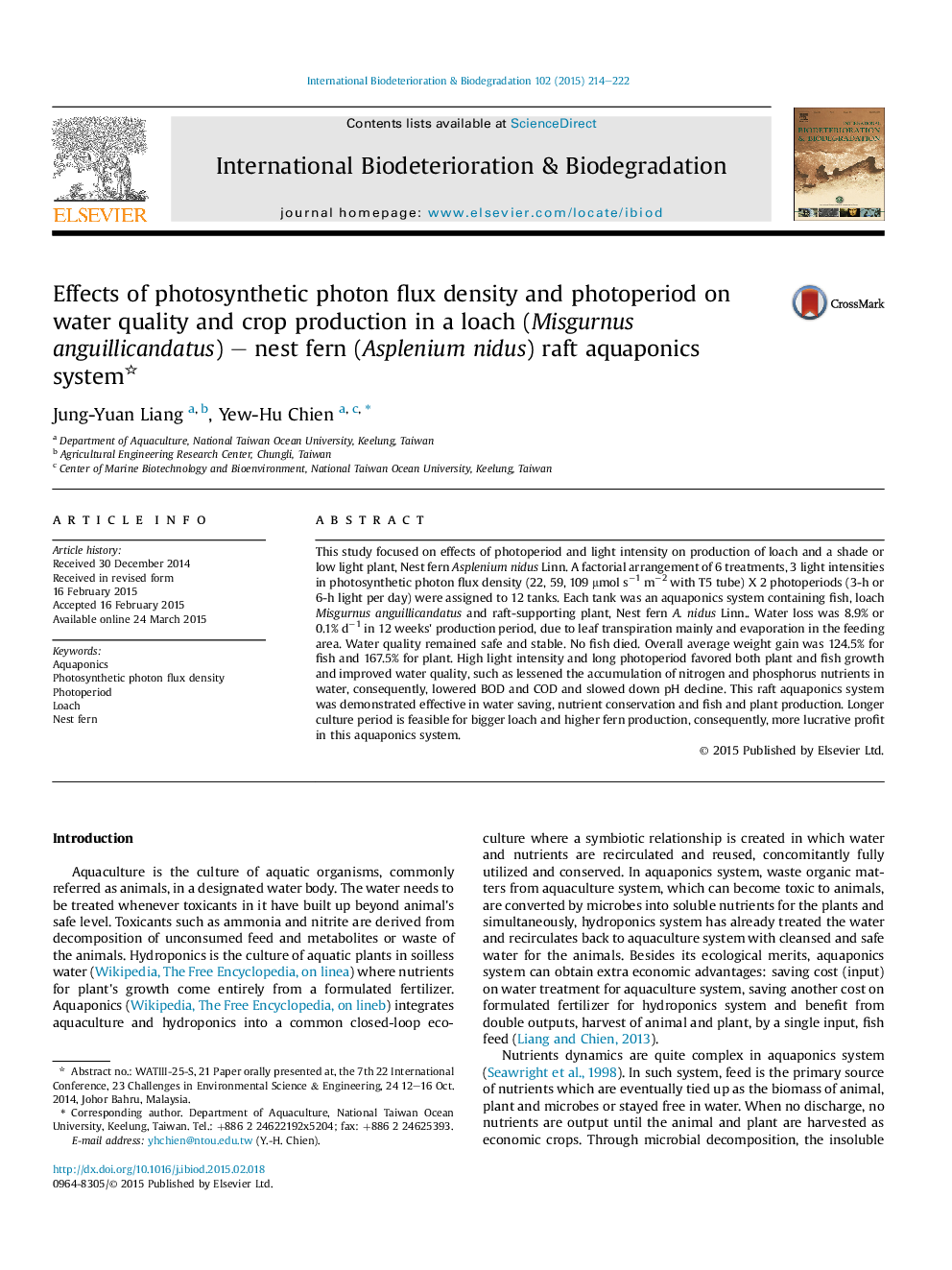| Article ID | Journal | Published Year | Pages | File Type |
|---|---|---|---|---|
| 4364371 | International Biodeterioration & Biodegradation | 2015 | 9 Pages |
Abstract
This study focused on effects of photoperiod and light intensity on production of loach and a shade or low light plant, Nest fern Asplenium nidus Linn. A factorial arrangement of 6 treatments, 3 light intensities in photosynthetic photon flux density (22, 59, 109 μmol sâ1 mâ2 with T5 tube) X 2 photoperiods (3-h or 6-h light per day) were assigned to 12 tanks. Each tank was an aquaponics system containing fish, loach Misgurnus anguillicandatus and raft-supporting plant, Nest fern A. nidus Linn.. Water loss was 8.9% or 0.1% dâ1 in 12 weeks' production period, due to leaf transpiration mainly and evaporation in the feeding area. Water quality remained safe and stable. No fish died. Overall average weight gain was 124.5% for fish and 167.5% for plant. High light intensity and long photoperiod favored both plant and fish growth and improved water quality, such as lessened the accumulation of nitrogen and phosphorus nutrients in water, consequently, lowered BOD and COD and slowed down pH decline. This raft aquaponics system was demonstrated effective in water saving, nutrient conservation and fish and plant production. Longer culture period is feasible for bigger loach and higher fern production, consequently, more lucrative profit in this aquaponics system.
Related Topics
Life Sciences
Environmental Science
Environmental Science (General)
Authors
Jung-Yuan Liang, Yew-Hu Chien,
